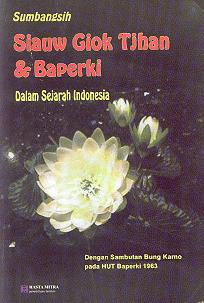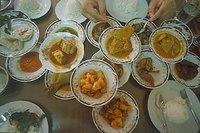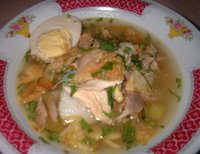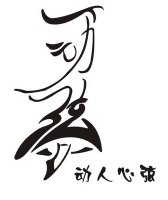 “Bhinneka Tunggal Ika” (Unity in diversity) was the Indonesian nation motto proclaimed by the Republic of Indonesia’s fore fathers. The fact is that Indonesia consists of many ethnic groups but one nation - Indonesia.
“Bhinneka Tunggal Ika” (Unity in diversity) was the Indonesian nation motto proclaimed by the Republic of Indonesia’s fore fathers. The fact is that Indonesia consists of many ethnic groups but one nation - Indonesia.
The Indonesian Chinese has been in Indonesia for more than a thousand years, and as history showed, the Indonesian Chinese has struggled for their identity as one of the Indonesian ethnic group, and to take their place as “Putra Indonesia” (Sons of Indonesia).
The Chinese culture played a significant role in the development of science and technology in Indonesia, to which the Indonesians enjoy the comforts of their daily lives today. - The Dutch initially paid little attention to agriculture in Java; it was the Chinese who developed rice cultivation.
- In the seventeenth century, the Chinese in Batavia cultivated sugar cane for the sugar trade.
- The Chinese never monopolized rice cultivation, but rendered the service of inventing new technologies, such as a system of rice hulling in 1750 which, using two or three cows, could process 500 tons of rice per day. This replaced the traditional system of manual pounding using a mortar that processed only 100 tons per day.
- It was the Chinese who invented these simple devices for farming – the pedal pump, sugar cane press, coconut juicer, rice huller, and plow.
- The Chinese also produced wine from fermented rice, sugar cane juice, and palm sap, having developed distillation from 1611.
- They cultivated crops such as peanut and indigo. Peanut was introduced in Batavia in 1755, probably from China, while indigo was indigenous to Indonesia, having been used as a dye under the local name tarum.
- The Chinese succeeded in cultivating vegetables and fruits, the best watermelon coming from Tanjung Kait. They also imported plants such as cotton and eggplant.
- A protein-rich crop introduced by the Chinese was the mung-soy bean, all the products of which have Chinese names: tauge (bean sprouts), tahu (tofu), and taoco (fermented soy beans). Kecap is also made from one type of bean.
- The Chinese were pioneers in the fields of metallurgy and mining. They worked in lead mining in Bangka and gold mining in West Kalimantan in the first half of the nineteenth century. The technique used by Chinese miners was very efficient for the time and originated from irrigation techniques: controlling the natural water flow to wash the mineral all along the surface of the slope.
- Other things developed by Chinese effort were sewing needles – the fabrics sewn were also initially imported from China – and household items such as the clay pot.
- The Chinese also had a role in casting cannons in Aceh and Patani.
- Chinese people have made contributions to marine technology as well. They were the ones who built the ships used by Pati Unus, the prince from Jepara, to attack Malacca. The deep sea fishing boat or perahu mayang used by local fishermen off the northern coast of Java uses waterproof partition material characteristic of Chinese ships.
- The Chinese were active in cultivating oysters, mussels, and fishponds.
- Salt-making techniques were developed by the Chinese, who did monopolize this industry before the nineteenth-century Dutch colonial government developed modern methods by taking possession of the large salt ponds in Gresik and Sumenep.
- Ethnic Chinese authors have played an important role in the development of modern Indonesian literature. Over the course of 90 years (1870-1960), this ethnic group gave rise to approximately 806 authors of 3005 books, while in the 50-year period from 1918 to 1967, non-Chinese authors of modern Indonesian literature numbered only 175 and produced around 400 books (not including translations).
All this time the Indonesians never realized the size of the Chinese contribution to the development of technology – sophisticated at the time and seemingly simple today – that has been so important in improving living conditions and social welfare. Even some of Indonesian daily diet originated in culinary techniques developed by the Chinese.
The noodles eaten every day by many Indonesians came from China. The method of making noodles was then adapted by local ethnic groups so that today they have a variety of noodles, such as Binjai noodles, Belitung noodles, and Aceh noodles. The tofu they enjoy every day was developed by a Chinese settler in Sumedang in 1917. Today, Sumedang is known for its tofu. Other popular foods are bakpao and siomay. Many snacks originated in China, such as hunkue (gelatin made from mung bean flour) and kwaci (dried watermelon seeds). Some kitchen utensils from China are the cobek (mortar), ulekan (pestle), kuali (clay pot), and anglo (clay brazier).
Also not forget that the Chinese took part in fighting for the independence of Indonesia. Naval officer Major John Lie was involved in smuggling from Singapore to generate funds for the republic (Lie 1992). Likewise, some centuries earlier in West Kalimantan, the Chinese fought against the Dutch colonial regime (Siahaan 1994).
Throughout the New Order, and peaking in the May 1998 riots, anti-Chinese sentiments by certain group in Indonesia have made the Indonesian Chinese as scapegoats. Perhaps one reason is that they have no idea of the true contributions of the ethnic Chinese to Indonesian civilization. This anti-Chinese certain group believe they are nothing but brokers, usurers, middlemen, and people who monopolize their economy.
References
- Adam, Asvi Warman. 1990. “Les Relations entre les Indes Néerlandaises et l’Indochine, 1870-1914.” Thèse de doctorat, Paris, EHESS.
- Colombijn, Freek, and J. Thomas Lindblad, eds. Roots of Violence in Indonesia: Contemporary Violence in Historical Perspective.
- Lie, John. 1992. “Dari Pelayaran Niaga ke Operasi Menembus Blokade Musuh.” In Memoar Pejuang Republik Indonesia Seputar “Zaman Singapura” 1945-1950, ed. Kustiniyati Mochtar.
- Lohanda, Mona. 2002. “Perspektif Historis Anti Cina.” In Antara Prasangka dan Realita (Telaah Kritis Wacana Anti Cina di Indonesia), ed. Andreas Pardede.
- Lombard, Denis. 1995. Nusa Jawa: Silang Budaya, jilid II Jaringan Asia.
- Pramoedya Ananta Toer. 2000. “Rasialisme Anti-Tionghoa dan Percobaan untuk Menjawabnya.” A recollection in Yusiu Liem, Prasangka Terhadap Etnis Cina: Sebuah Intisari.
- Siahaan, Harlem. 1994. “Konflik dan Perlawanan Kongsi Cina di Indonesia.” Ph.D. Diss. University of Gajah Mada.
- Siauw Tiong Djin. 1998. Penyelesaian Masalah Minoritas Adalah Bagian dari Reformasi Total.
- Sukma, Rizal. 2002. “Dimensi Eksternal Masalah Anti Cina di Indonesia.” In Antara Prasangka dan Realita (Telaah Kritis Wacana Anti Cina di Indonesia), ed. Andreas Pardede.
- Suryadinata, Leo. 1984. Dilema Minoritas Tionghoa.
- Kepustakaan Populer Gramedia and Intisari Magazine. Data from 2002.
 This weekend, I talked about this issue with some friends (male and female) and they agree with my evaluation of female behaviour. So, with the knowledge that there are others who feel the same way I do, I post this Rant for your amusement.
This weekend, I talked about this issue with some friends (male and female) and they agree with my evaluation of female behaviour. So, with the knowledge that there are others who feel the same way I do, I post this Rant for your amusement.











